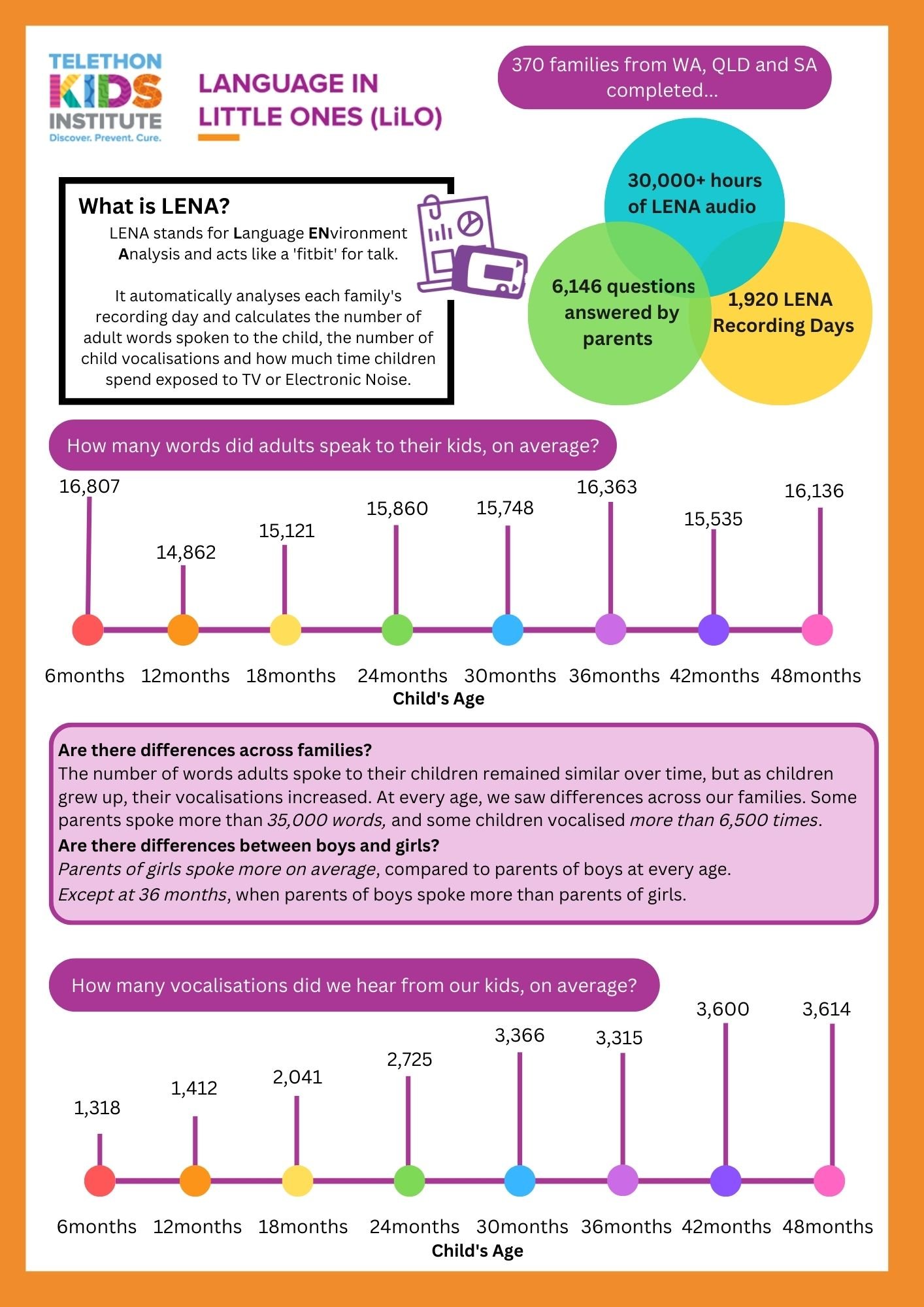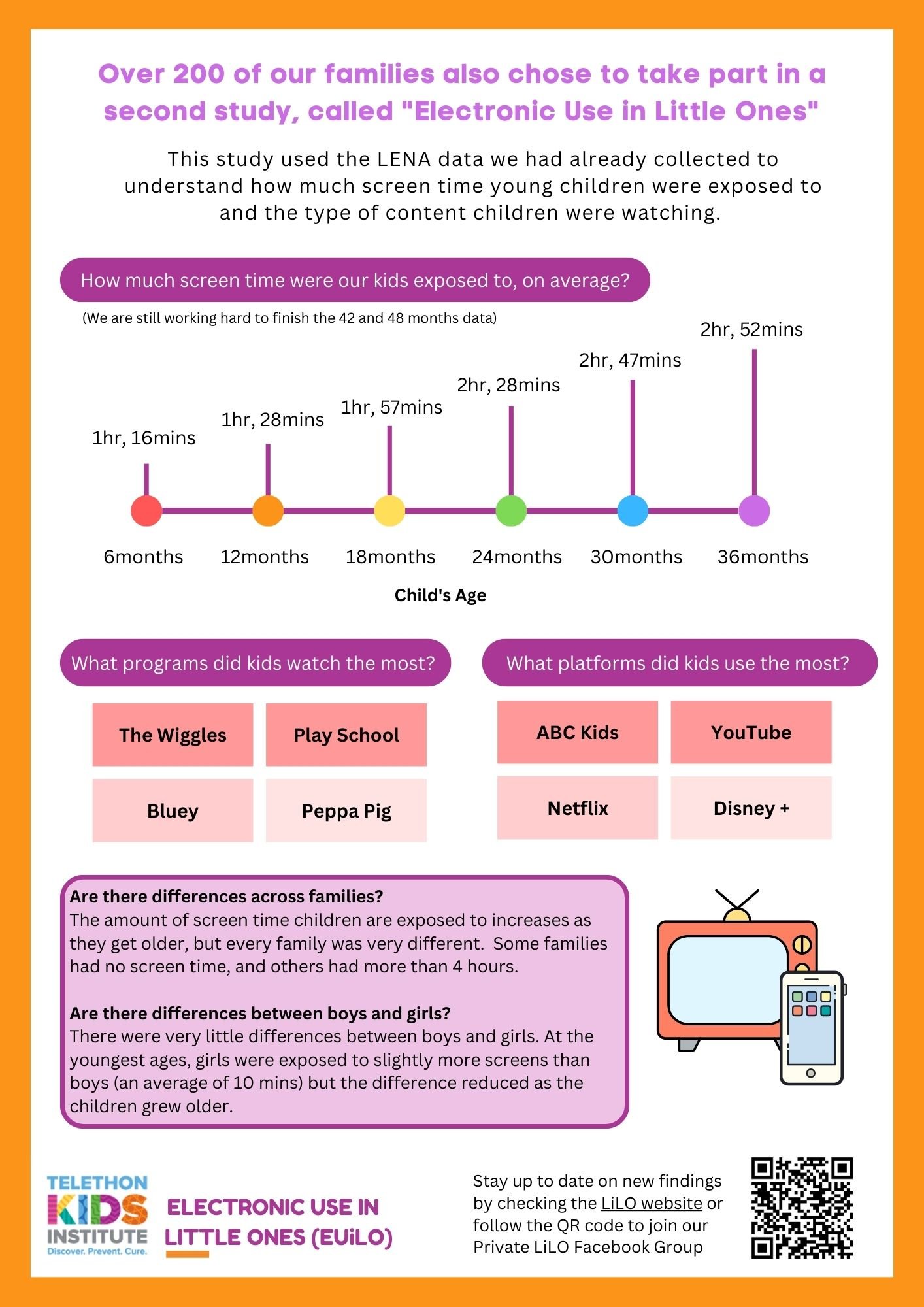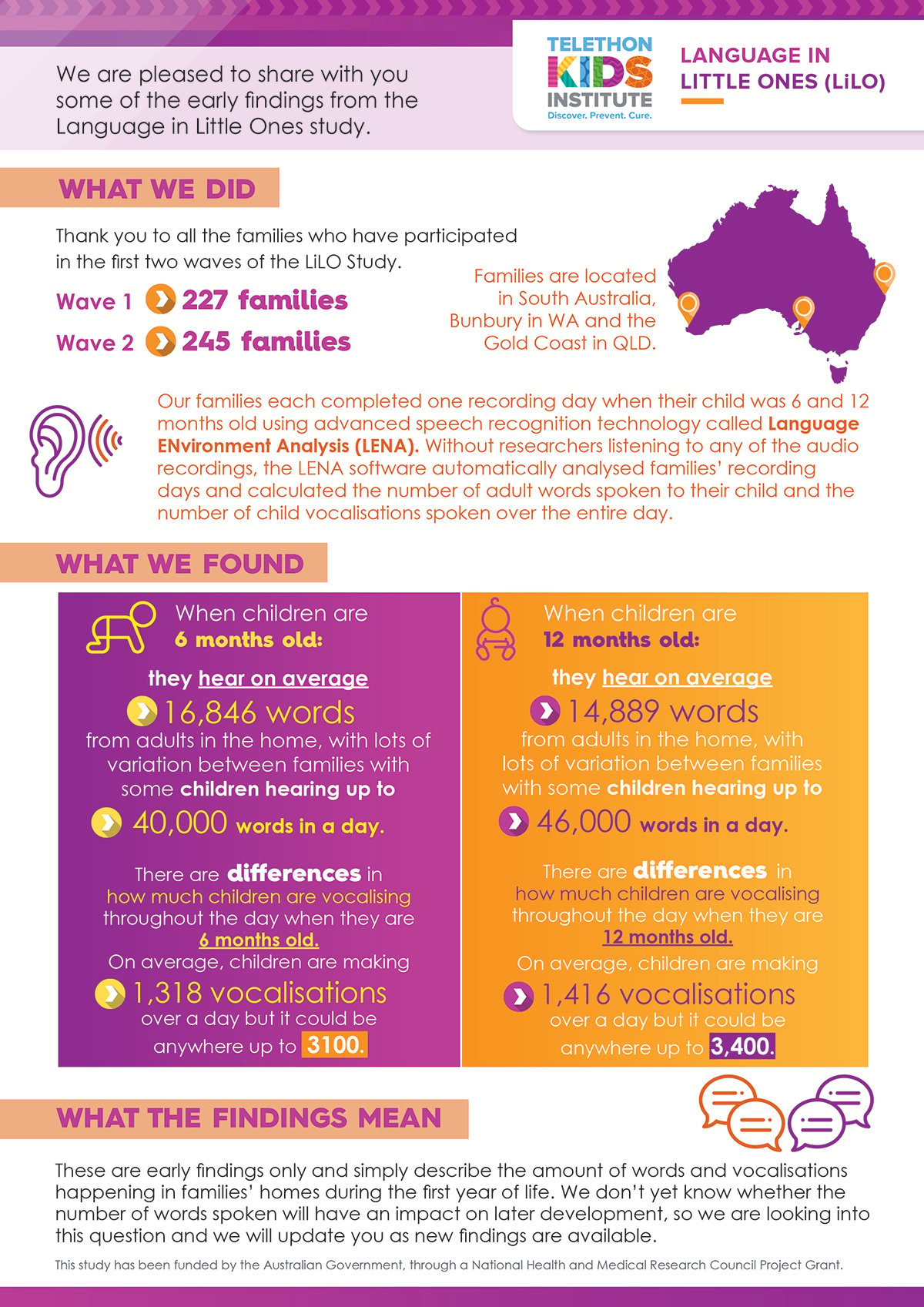A summary of the LiLO study
These infographics were designed specifically for the families who participated in our study, highlighting some of our main findings to date. We are so thankful to all of our families who took part in the study and will continue to share more findings as they are released. For any questions about these results, please contact: mary.brushe@telethonkids.org.au


The education word gap emerges by 18months: findings from an Australian prospective study
New findings from the LiLO study include the latest wave of data collection – when children are 18 months old. These results demonstrate the emergence of a word gap between our high and low educated groups between 12 and 18 months of age. Whereby, high educated families, on average, are talking more to their children at 18 months of age. However, our results still demonstrate variability among the two groups with both education groups including high and low talkers. These results have implications for the timing of interventions that aims to encourage parents to talk more to their children in that they should be implemented prior to the children turning 18 months.
This article was published in BMC Pediatrics and funded by the National Health and Medical Research Council. The media release for these findings can be found here.
These results have also been featured in a blog post by the LENA Foundation, which can be read here.
A research snapshot has also been created for policy makers and early childhood educators, which summarises in lay terminology the findings from this work. The research snapshot can be found here.
Brushe, M.E., Lynch, J., Reilly, S. et al. The education word gap emerges by 18 months: findings from an Australian prospective study. BMC Pediatr 21, 247 (2021). https://doi.org/10.1186/s12887-021-02712-1
How many words are Australian children hearing in the first year of life?
For the first time in Australia, we have quantified the amount of talk children are hearing and speaking in their home environment when they are six and twelve months old. Our results discuss the large variation in talk during the first year of life and the lack of differences between maternal education groups. This work has been published in BMC Pediatrics and we have designed an infographic for interested families and stakeholders.
Brushe, M. E., Lynch, J. W., Reilly, S., Melhuish, E., Brinkman, S. A. (2020) How many words are Australian children hearing in the first year of life? BMC Pediatrics 20, 52. https://doi.org/10.1186/s12887-020-1946-0


